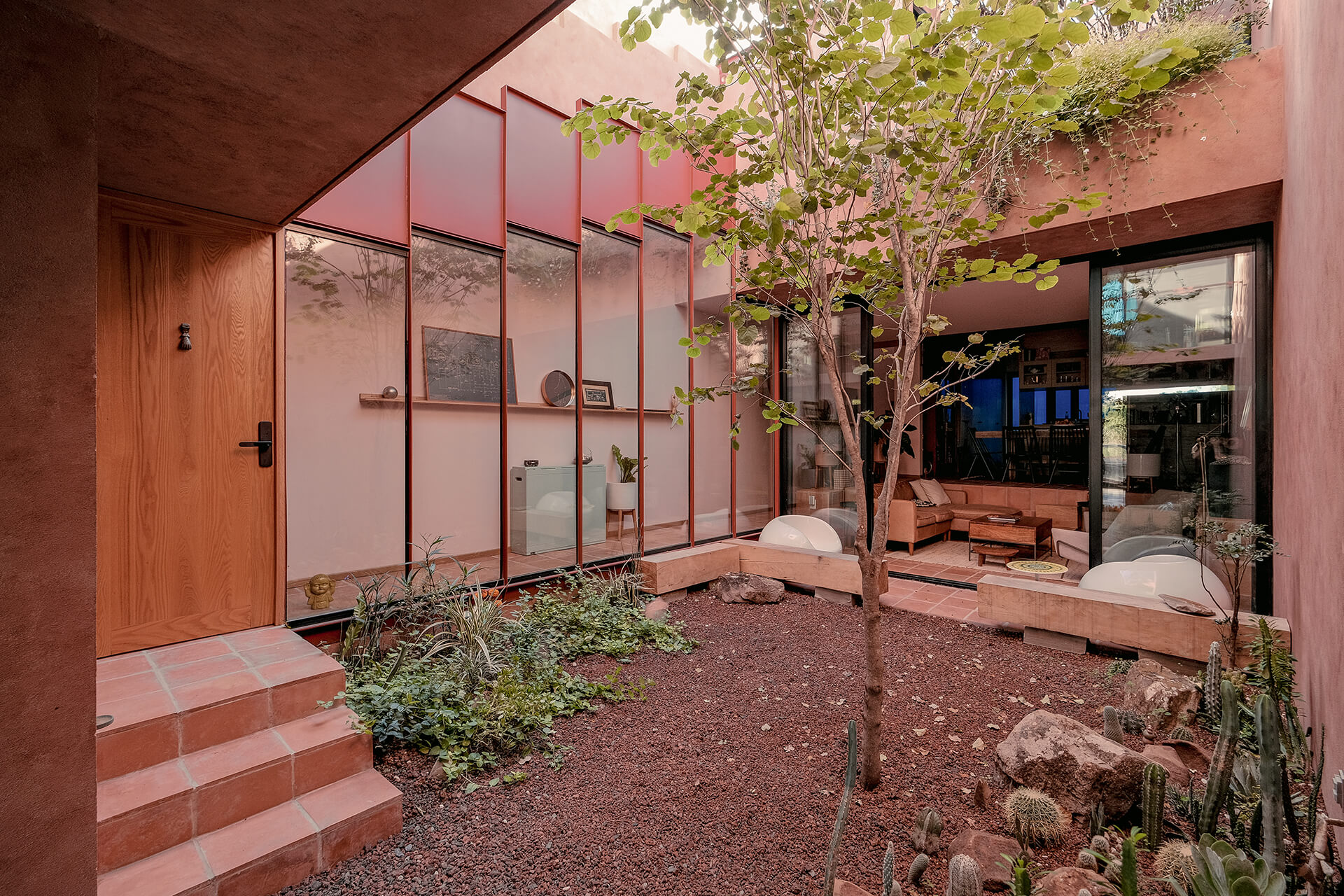Mexico-based David Martínez Ramos, founding partner and lead architect of Práctica Arquitectura has designed a bungalow in the historic centre of San Pedro Garza in Monterrey, Mexico. This arresting home for a single-family is constructed on a very narrow plot, which measures five metres by 20 metres. The home reimagines what a narrow bungalow can look like and offers its residents an indoor-outdoor living experience. The home, which has pockets of greenery, is a serene sanctuary that provides unobstructed views of the neighbouring mountains from its roof.

“The clients who commissioned the project were deeply drawn to the location of the house. They had a strong desire to feel a sense of ownership over their living space, and to experience a connection to the area that they had not found in any of their previous residences. However, the plot of land they had to work with was very small, measuring only five by 20 metres, which made it a challenging task to incorporate all their requirements. Nevertheless, the design scheme was developed to make the most of the available space,” says Martínez Ramos.
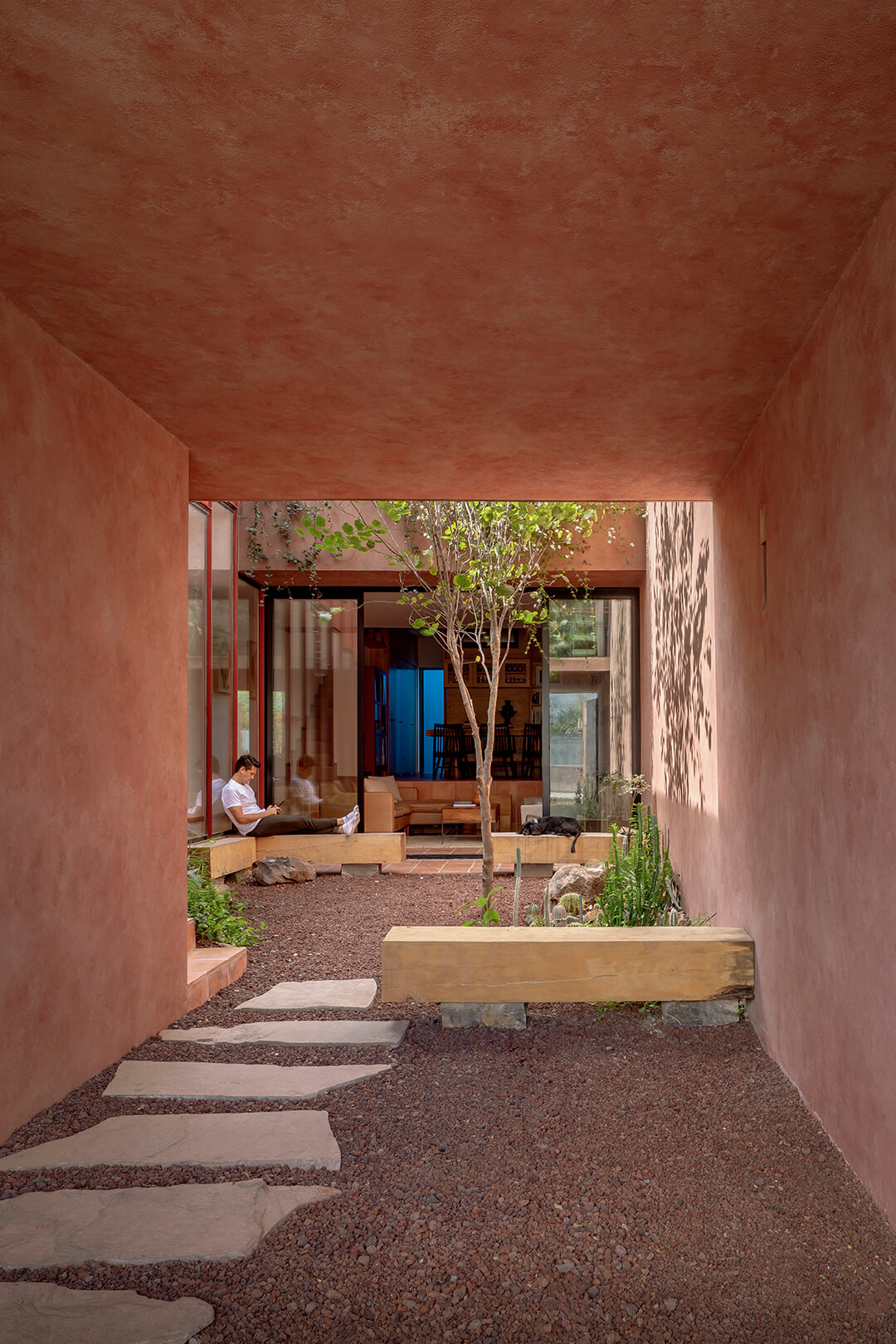
Known as Casa Ederlezi, the concrete walls of the home were covered with a reddish coating to give it a unique personality and to unify its varied spaces. Ederlezi is the name of the celebration that marks the beginning of spring in the Balkans and Turkey. The pigmented concrete coating was chosen as it drew inspiration from the vibrant colours found in the Balkans, evoking memories of the clients’ travels in that region. While the layout of the home consists of a sequence of square-shaped spaces, the built form is animated by crisscrossing steps, platforms, overlapping gates, and a zigzag profile on the facade created along the slope of the exterior staircases. The home’s outer wall meets the city’s heritage conservation restrictions and offers privacy as well.
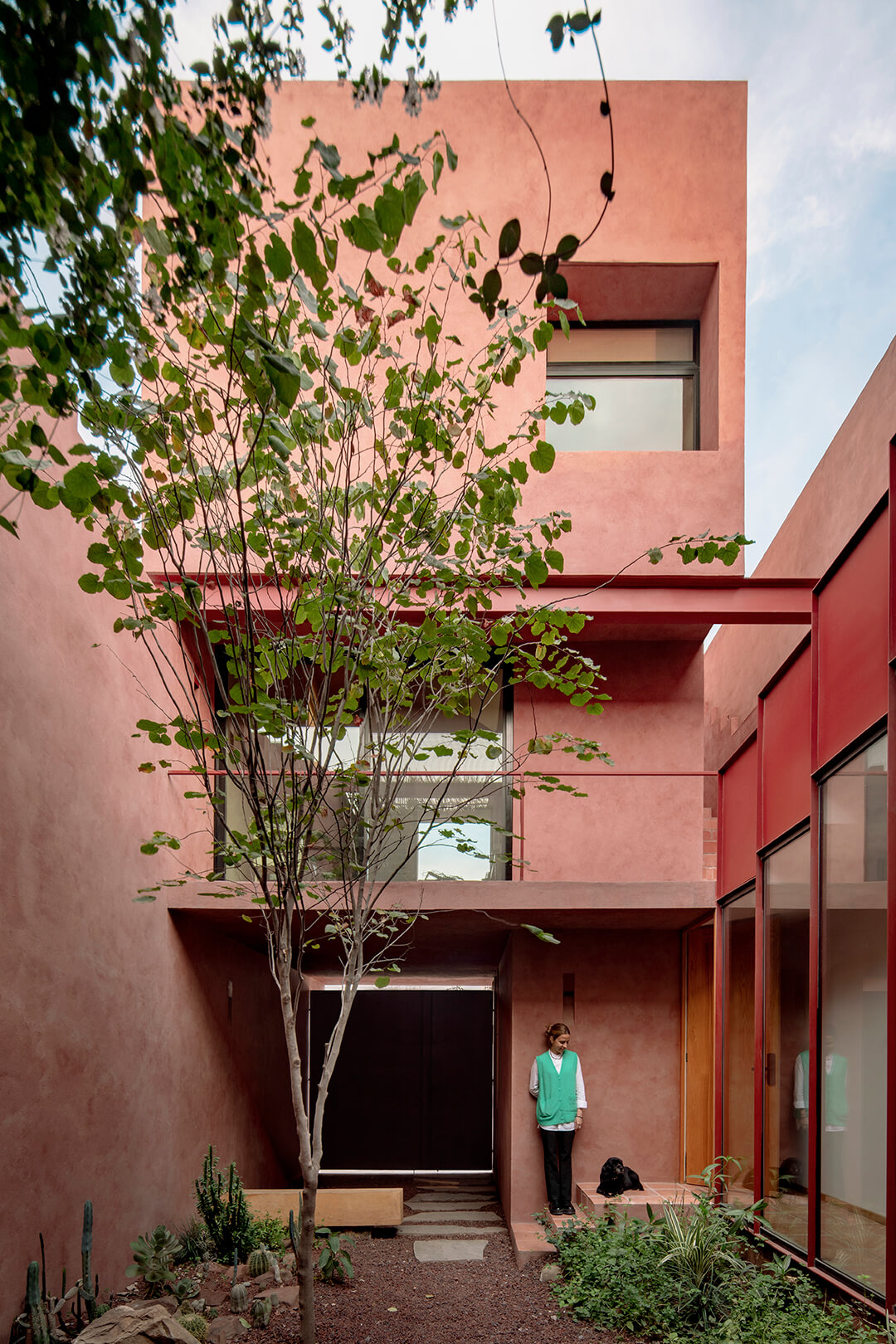
Important to the design of Casa Ederlezi is a series of interconnecting gardens that run through the entire length of the property. By using these outdoor spaces to divide the house into different zones, it was possible to create an open and inviting atmosphere that would provide the clients with a sense of connectedness and harmony. The bungalow features a central courtyard that divides it into two distinct volumes. The first volume, which faces the street, comprises the entrance hall, the garage, a double-height guest room with a mezzanine, and a rooftop terrace. At the rear, the second volume houses the living room, dining room and kitchen, a blue patio that marks the edge of the property, and the primary bedroom that opens to a landscaped terrace. “The contrast between the greenery of the vegetation with the red tones of the walls, the tezontle in the garden and the doors, seeks to perpetuate the warmth and movement of that season of awakening. It emulates memories of the desert and Mediterranean landscapes present in conversations with clients during the design process. From the particularity of its volumetrics and the mysteries and surprises that define its paths, the personality of the house is constructed, deeply similar, but also different from its context,” Martínez Ramos explains.
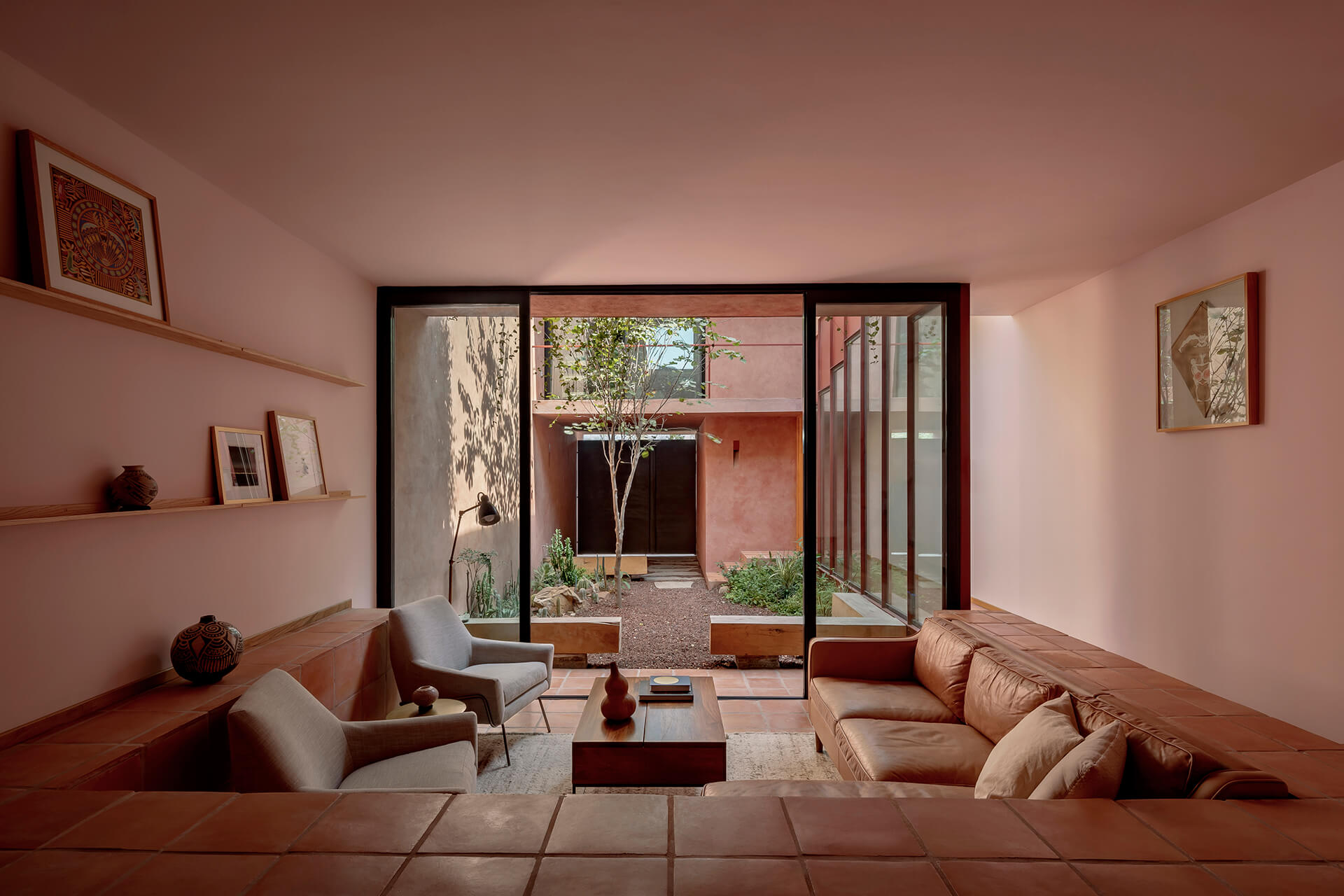
Casa Ederlezi reimagines how we inhabit residential spaces. Rather than a typical box-like structure that accommodates spaces within, the house is divided into two pavilions based on the priority of habitability, with gardens and patios linking the spaces. This layout creates a sense of awe and spaciousness despite the house’s small footprint. Additionally, given that the façade primarily had to be closed off due to building restrictions, the essence of the home had to come from within the house itself. The interior design of Casa Ederlezi is minimal, populated with arresting reddish rooms, patios, and landscaped spaces that invite residents to take a pause amidst nature.
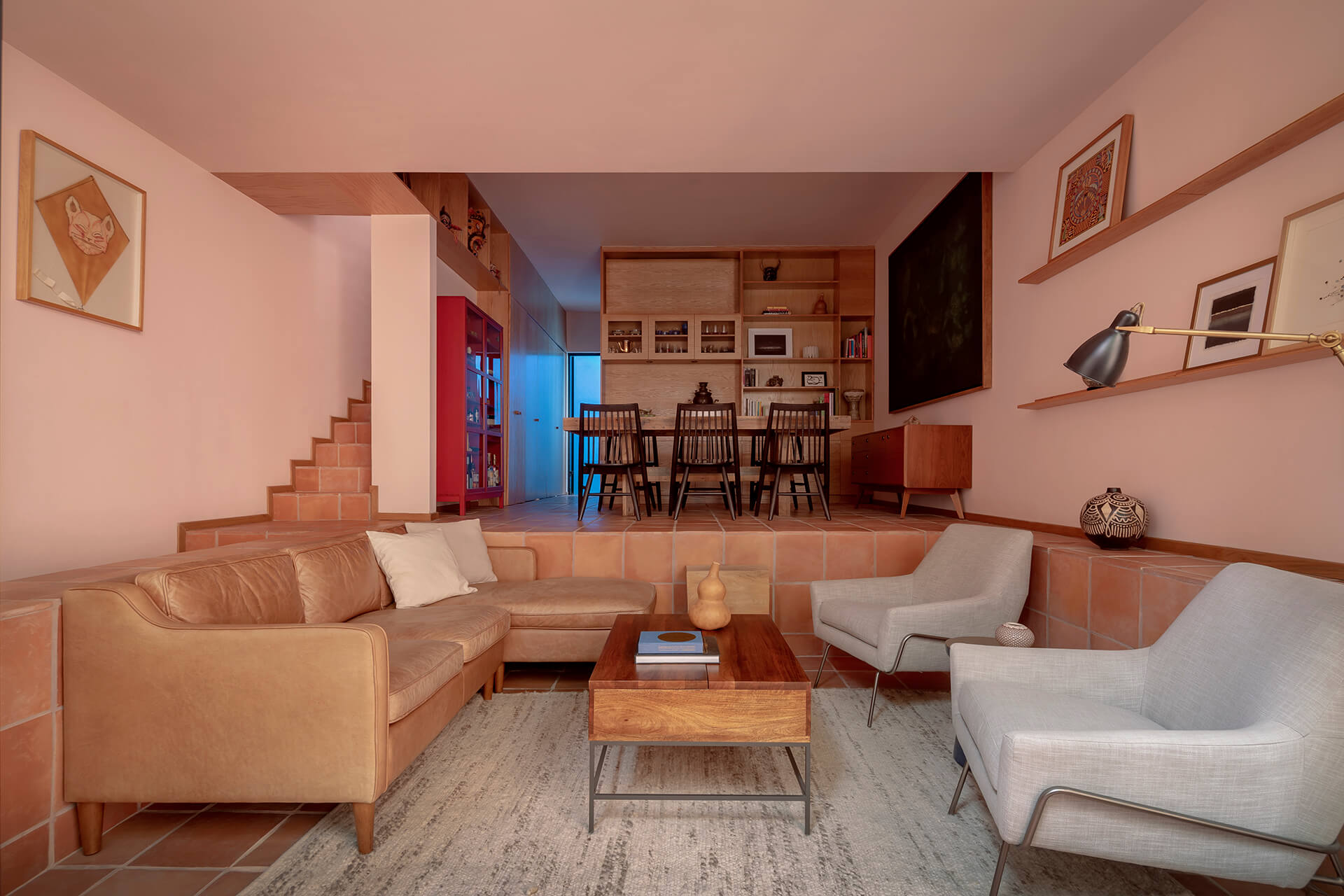
Casa Ederlezi also exhibits biophilic design elements. The home uses renewable energy and houses lush green spaces. “The project featured important active and passive sustainable systems to mitigate environmental effects. As for the former, it has solar panels and rainwater harvesting systems to reduce resource consumption. As for the latter, the green terraces, together with cross ventilation, help to regulate thermal incidence, generate oxygen-producing spaces and encourage the use of vegetation in an area marked by a lack of parks. This last element is especially important in a city like Monterrey with summer temperatures of around 40 degrees Celsius,” concludes Martínez Ramos.
